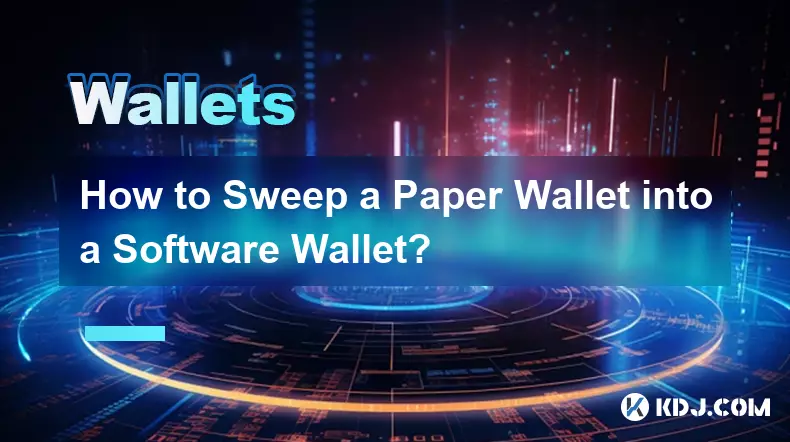-
 bitcoin
bitcoin $95122.959084 USD
-0.06% -
 ethereum
ethereum $3142.532402 USD
-0.28% -
 tether
tether $0.999439 USD
0.01% -
 xrp
xrp $2.209207 USD
-2.80% -
 bnb
bnb $925.395975 USD
0.07% -
 solana
solana $138.662599 USD
-1.73% -
 usd-coin
usd-coin $0.999753 USD
-0.02% -
 tron
tron $0.294100 USD
0.03% -
 dogecoin
dogecoin $0.161321 USD
0.35% -
 cardano
cardano $0.498672 USD
-1.53% -
 hyperliquid
hyperliquid $38.406659 USD
1.34% -
 zcash
zcash $679.663571 USD
5.44% -
 bitcoin-cash
bitcoin-cash $501.381807 USD
3.53% -
 chainlink
chainlink $13.975571 USD
-0.64% -
 unus-sed-leo
unus-sed-leo $9.166130 USD
-0.37%
How to Find Your Bitcoin Wallet Address? A Step-by-Step Guide.
A Bitcoin wallet address is a unique, public identifier used to receive funds, with different formats like P2PKH ("1"), P2SH ("3"), and Bech32 ("bc1") offering varying security and efficiency.
Nov 15, 2025 at 12:00 pm

Understanding Bitcoin Wallet Addresses
1. A Bitcoin wallet address is a unique string of alphanumeric characters used to send and receive Bitcoin. It functions similarly to a bank account number but operates on the blockchain network. Each address is associated with a specific wallet and is generated through cryptographic algorithms.
2. There are different types of Bitcoin addresses, including P2PKH (starting with '1'), P2SH (starting with '2'), and Bech32 (starting with 'bc1'). These formats correspond to various script types and offer differing levels of security and transaction efficiency.
3. Your wallet address is public and can be shared freely when receiving funds. However, private keys must remain confidential. Exposing your private key could lead to irreversible loss of funds.
4. Wallet addresses are derived from public keys, which themselves come from private keys. This hierarchical structure ensures that only someone with access to the private key can authorize transactions from that address.
5. Most wallets generate a new address for each incoming transaction to enhance privacy. Reusing addresses is discouraged as it links multiple transactions to a single identity on the public ledger.
Locating Your Bitcoin Address in Different Wallet Types
1. For mobile wallets like Trust Wallet or Electrum Mobile, open the app and navigate to the 'Receive' section. The app will display a QR code and the corresponding Bitcoin address. You can copy it directly or share it via messaging platforms.
2. Desktop wallets such as Electrum or Bitcoin Core require launching the application and selecting the option labeled 'Receive' or 'Request.' The interface typically shows the current active address along with options to label the payment request.
Always verify the address on-screen matches the QR code before sharing it externally.3. Hardware wallets like Ledger or Trezor demand physical confirmation. After connecting the device and opening the Bitcoin app, users must initiate a receive action through companion software like Ledger Live. The device screen displays the address for validation.
4. Web-based wallets including Coinbase or Blockchain.com present the address after logging in and clicking 'Receive.' These services often provide both legacy and SegWit addresses, allowing users to choose based on fee preferences.
5. Paper wallets involve scanning a printed QR code or manually entering the address stored offline. Extreme caution is necessary during use, as any interaction exposes the funds to potential digital threats.
Security Practices When Sharing Your Address
1. Double-check the full address when copying it manually. Even one incorrect character can redirect funds to an unintended recipient permanently.
2. Use clipboard monitoring tools cautiously. Malware exists that swaps copied Bitcoin addresses with attacker-controlled ones. Some wallets include built-in protections against this threat.
Avoid posting your Bitcoin address publicly on forums or social media unless absolutely necessary.3. Enable two-factor authentication on custodial wallets to protect account access. While the address itself is public, unauthorized login could allow attackers to change recovery settings or withdraw funds.
4. Consider using payment codes or BIP47 reusable addresses if your wallet supports them. These methods allow repeated transactions without sacrificing privacy by generating unique addresses per sender.
5. Regularly audit incoming transactions using blockchain explorers. Enter your address into sites like Blockstream.info to confirm receipt and inspect transaction history without logging into any wallet.
Frequently Asked Questions
What does a Bitcoin wallet address look like? A Bitcoin address typically consists of 26–35 alphanumeric characters. Legacy addresses start with '1,' SegWit addresses begin with 'bc1,' and P2SH addresses start with '3.' An example might be: bc1qar0srrr7xfkvy5l643lydnw9re59gtzzwf5mdq.
Can I have more than one Bitcoin address? Yes, most wallets automatically generate a new address for each transaction. This improves privacy by preventing linkage of all your activity to a single identifier. You can have thousands of addresses linked to one seed phrase.
Is it safe to reuse a Bitcoin address? Reusing an address is technically possible but not recommended. It reduces financial privacy by making it easier to track your transaction history and balance through blockchain analysis techniques.
What should I do if I sent Bitcoin to the wrong address? Transactions on the Bitcoin network are irreversible. If you sent funds to an incorrect address, recovery is unlikely unless you know the owner of the destination wallet and they cooperate. Always test with a small amount first when sending to a new recipient.
Disclaimer:info@kdj.com
The information provided is not trading advice. kdj.com does not assume any responsibility for any investments made based on the information provided in this article. Cryptocurrencies are highly volatile and it is highly recommended that you invest with caution after thorough research!
If you believe that the content used on this website infringes your copyright, please contact us immediately (info@kdj.com) and we will delete it promptly.
- Crypto ETFs: Index Tracking and Market Access for the Savvy Investor
- 2025-11-16 10:05:01
- Wormable npm Packages and Token Stealers: A Deep Dive into Supply Chain Security
- 2025-11-16 10:00:01
- Penny Discontinuation: What It Means for Coin Values and Numismatists
- 2025-11-16 09:55:01
- Penny Discontinuation: Coin Values and the Numismatist's Take
- 2025-11-16 09:50:01
- Crypto's Wild Ride: APEING, BCH, and the Quest for 100x Gains
- 2025-11-16 09:45:02
- Bulls, Volunteers, and Super League: A New Yorker's Take
- 2025-11-16 09:40:01
Related knowledge

How to Use a Testnet Wallet for Development and Testing?
Nov 14,2025 at 06:20pm
Understanding Testnet Wallets in Blockchain Development1. A testnet wallet functions similarly to a mainnet wallet but operates on a blockchain networ...

How to Create a Watch-Only Wallet for Monitoring Funds?
Nov 15,2025 at 02:39am
Understanding Watch-Only Wallets in the Crypto Ecosystem1. A watch-only wallet is a type of cryptocurrency wallet that allows users to monitor blockch...

How to Sweep a Paper Wallet into a Software Wallet?
Nov 14,2025 at 10:59pm
Understanding Paper Wallets and Software Wallets1. A paper wallet is a physical document that contains a cryptocurrency public address and a private k...

Can a Crypto Wallet Be Traced? An Explanation.
Nov 16,2025 at 08:19am
Understanding the Traceability of Cryptocurrency Wallets1. Cryptocurrency transactions operate on decentralized blockchain networks, where every trans...

What Is a Multi-Signature Wallet and How Does It Work?
Nov 16,2025 at 03:59am
What Is a Multi-Signature Wallet?1. A multi-signature wallet, often referred to as multisig, is a type of cryptocurrency wallet that requires more tha...

Understanding Transaction Fees in Your Crypto Wallet.
Nov 15,2025 at 02:40pm
How Transaction Fees Work in Cryptocurrency Wallets1. Every time a user sends cryptocurrency from one wallet to another, the transaction must be verif...

How to Use a Testnet Wallet for Development and Testing?
Nov 14,2025 at 06:20pm
Understanding Testnet Wallets in Blockchain Development1. A testnet wallet functions similarly to a mainnet wallet but operates on a blockchain networ...

How to Create a Watch-Only Wallet for Monitoring Funds?
Nov 15,2025 at 02:39am
Understanding Watch-Only Wallets in the Crypto Ecosystem1. A watch-only wallet is a type of cryptocurrency wallet that allows users to monitor blockch...

How to Sweep a Paper Wallet into a Software Wallet?
Nov 14,2025 at 10:59pm
Understanding Paper Wallets and Software Wallets1. A paper wallet is a physical document that contains a cryptocurrency public address and a private k...

Can a Crypto Wallet Be Traced? An Explanation.
Nov 16,2025 at 08:19am
Understanding the Traceability of Cryptocurrency Wallets1. Cryptocurrency transactions operate on decentralized blockchain networks, where every trans...

What Is a Multi-Signature Wallet and How Does It Work?
Nov 16,2025 at 03:59am
What Is a Multi-Signature Wallet?1. A multi-signature wallet, often referred to as multisig, is a type of cryptocurrency wallet that requires more tha...

Understanding Transaction Fees in Your Crypto Wallet.
Nov 15,2025 at 02:40pm
How Transaction Fees Work in Cryptocurrency Wallets1. Every time a user sends cryptocurrency from one wallet to another, the transaction must be verif...
See all articles










































































